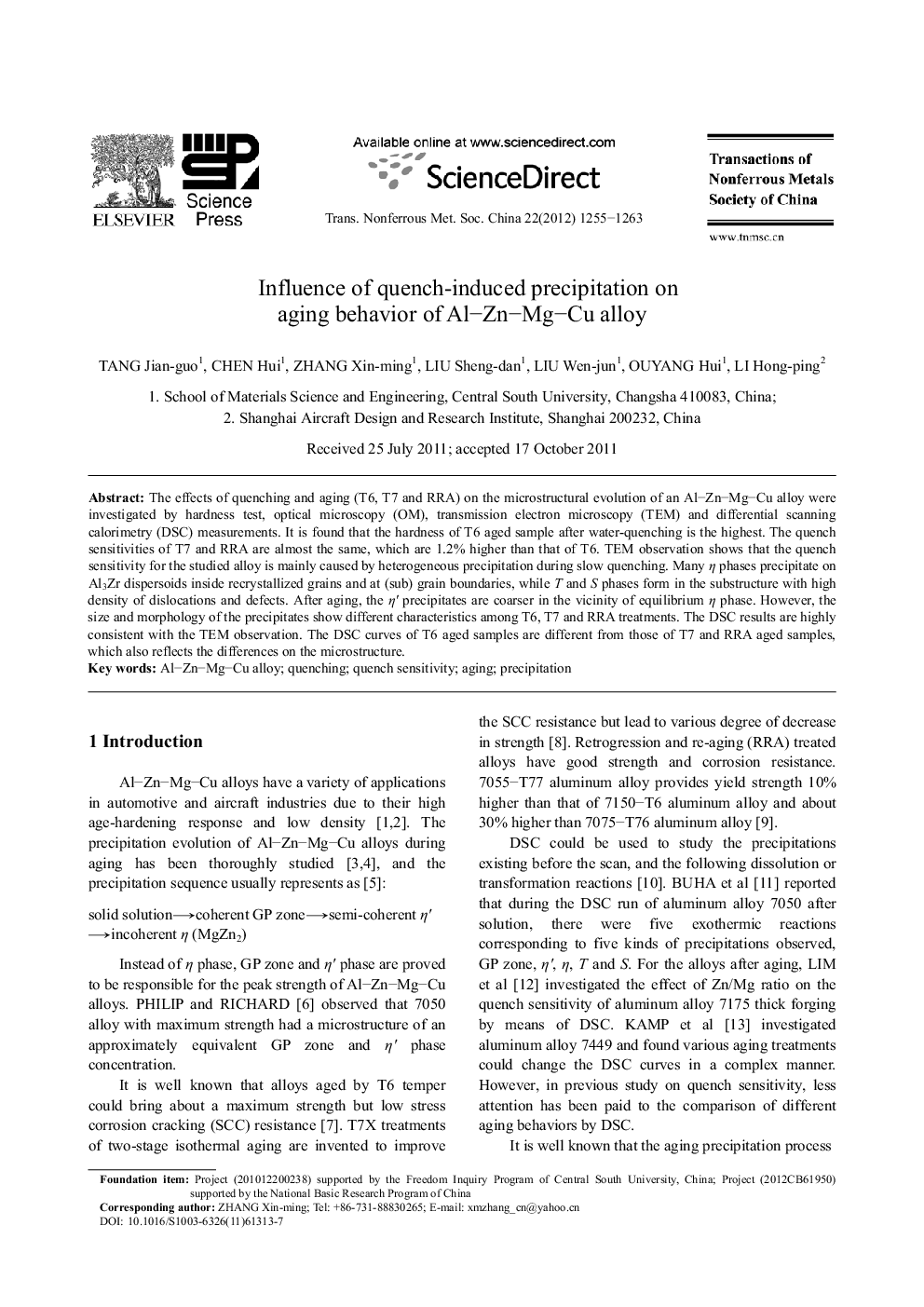| Article ID | Journal | Published Year | Pages | File Type |
|---|---|---|---|---|
| 1637084 | Transactions of Nonferrous Metals Society of China | 2012 | 9 Pages |
Abstract
The effects of quenching and aging (T6, T7 and RRA) on the microstructural evolution of an Al-Zn-Mg-Cu alloy were investigated by hardness test, optical microscopy (OM), transmission electron microscopy (TEM) and differential scanning calorimetry (DSC) measurements. It is found that the hardness of T6 aged sample after water-quenching is the highest. The quench sensitivities of T7 and RRA are almost the same, which are 1.2% higher than that of T6. TEM observation shows that the quench sensitivity for the studied alloy is mainly caused by heterogeneous precipitation during slow quenching. Many n phases precipitate on Al3Zr dispersoids inside recrystallized grains and at (sub) grain boundaries, while T and S phases form in the substructure with high density of dislocations and defects. After aging, the n' precipitates are coarser in the vicinity of equilibrium n phase. However, the size and morphology of the precipitates show different characteristics among T6, T7 and RRA treatments. The DSC results are highly consistent with the TEM observation. The DSC curves of T6 aged samples are different from those of T7 and RRA aged samples, which also reflects the differences on the microstructure.
Related Topics
Physical Sciences and Engineering
Materials Science
Metals and Alloys
Authors
Jian-guo TANG, Hui CHEN, Xin-ming ZHANG, Sheng-dan LIU, Wen-jun LIU, Hui OUYANG, Hong-ping LI,
